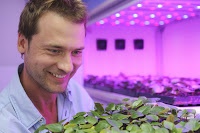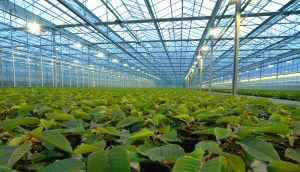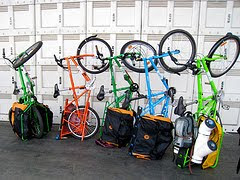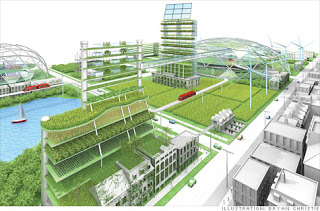Visit our corporate website at https://hortamericas.com
Category: Uncategorized
Urban Agriculture – A New State of Mind
Hort Americas is continually interested in watching the urban agriculture movement. (Especially as it relates to areas like Detroit, Michigan.)
The below video shows how small farms can bring “life” back to communities.
The next step for these farmers will be to create more opportunities (good paying jobs, growth/education for young people, and community development.)
At this point in time, in order to create a stable environment for all it will be important to create a year round of produce using technology to out smart the Michigan winters and technology to out compete cheap supply from other warmer climates.
It is truly exciting to watch disciplines like controlled environment agriculture, hydroponics, aeroponics, etc. be used as potential tools in an endeavor as important as rebuilding a city, a community and what will become a generation.
Visit our corporate website at https://hortamericas.com
Bioworks and Philips have new products for Hydroponics and Horticulture

Biowork’s Nemashield a great option for Hydroponic Greenhouse Vegetable Growers looking at controling soil-borne insects.
Visit our corporate website at https://hortamericas.com
Greenhouse Production to Continue Increasing in Mexico
Read this Exectuive Summary from the USDA
Executive Summary: During the week of April 13, 2010, FAS/Mexico visited protected agricultural facilities in the states of Jalisco and Sinaloa. Production under these houses has transformed Mexican agriculture and continues to adapt unique technologies depending on weather conditions and economic factors. Protected agricultural production uses installations of low to medium technology and ranges from hard plastic to anti-aphid netting (depending on the definition of greenhouse or shade house). A few use hydroponic systems, but most use drip irrigation without heating systems or CO2. Half of the area devoted to protected agriculture uses shade houses since this type of technology can adapt to the weather more efficiently. Most of the growers agreed that due to the latitude of Mexico and warmer climates in producing areas, shade houses adapt better (especially considering shade houses are typically cheaper). According to producers, weather conditions dictate what kind of technology is needed to guarantee optimal conditions of growth and quality production while following food safety production regulations and therefore, more producers are moving to shade houses. Whether through greenhouses or shade houses, production under protected agriculture continues to grow rapidly. The percentage of area planted using protected agriculture has increased nearly 40 percent over the past three years. The United States is the primary market for products grown under protected agriculture, but growers continue to export larger quantities each year to other markets.
Please email us at infohortamericas@gmail.com for additional information.
Visit our corporate website at https://hortamericas.com
An opposing view on Vertical Farming
Hort Americas believes that both sides should be heard and looked at when it comes to Hydroponics, Vertical Farming, Urban Agriculture and CEA.
And while we at Hort Americas may believe firmly in new “farming” opportunities, we completely understand the Macro view and their potential limitations.
Please take a minute to read this post from Graham Land at Greenfudge.org and the article by George Monbiot, before you make up your own mind.
In Monday’s Guardian George Monbiot slams the concept of ‘vertical farming’ in a piece, entitled ‘Greens living in ivory towers now want to farm them too’.
His main beef is that a Columbia University parasitologist named Dickson Despommier has been getting a lot of support in the green media for his idea to create skyscraper farms in densely populated urban areas like New York City, which might be a brilliant idea, but it’s a fanciful one as well.
This immediately reminded me of stories about an underground indoor rice farm in Tokyo’s financial district, which turned out to be an expensive publicity experiment.
Monbiot sees vertical farming as a distraction. Water and farmland shortages along with a growing world population bring agriculture and food towards the forefront of environmental issues. Scary stuff in terms of crop failures and resultant starvation for the poor have-nots, but the haves in places like Manhattan are interested in expensive high tech luxury solutions like skyscraper farming?
Despite the impracticality and massive expense the environmental media has been all over it. In a Time magazine article, there is a partial admission of the fault:
“[…] Despommier concedes that it would cost hundreds of millions to build a full-scale skyscraper farm. That’s the main drawback: construction and energy costs would probably make vertically raised food more costly than traditional crops. At least for now.”
Honestly, vertical farming sounds like a cool university project for a designer or architect, but the extent to which it is taken by Despommier seems far from realistic.
I prefer the other kind of urban farming that is happening in Detroit. People move out, abandon houses and land, the remaining folks utilize that land to grow food, which they eat and sell. Brilliant, efficient and not reliant on some expensive high-tech structure in an exorbitantly priced neighborhood. Maybe I’m just completely ignorant, but besides roof gardens, urban gardens or small plots, farming in Manhattan just doesn’t make much sense.
Read about that in this BBC News article:
Urban farming takes root in Detroit
We should be as efficient as we can, but that means behavior suited to the immediate surroundings, not forcing a square peg into a round hole. How about practical solutions like wasting less energy by importing less food? How about growing crops primarily for human consumption rather than wasteful, intensive livestock farming?
Still, if vertical farming happens to work, then fine, knock yourself out.
Visit our corporate website at https://hortamericas.com
Hydroponics, Aquaponics and Urban Argriculture Offers Opportunity to Re-Invent Small Industry
Hort Americas recently saw this video from a news station in Tampa Bay, Florida.
However there are times that major turmoil and obstacles can create new and unique opportunities.
Watch this video to see how aquaponics and hydroponics may be an option for those looking for new ventures.
Visit our corporate website at https://hortamericas.com
Future Growings Tower Garden – Rooftop Garden Deluxe
Soon to be available at Hort Americas!
Rooftop farming with the Tower Garden is perfect for anyone interested in Hydroponics, Vertical Farming and Urban Agriculture.
Visit our corporate website at https://hortamericas.com
Hort Americas currently looking for NEW TEAM Members
Hort Americas is looking to expand its team. If you are interested in working in sales in Mexico or working inside sales support in the DFW area, please email us your resume at infohortamericas@gmail.com
Visit our corporate website at https://hortamericas.com
LED Research Modules Now Available

The below information was provided by Philips directly.
Research
“We require reliable products that can be used flexibly for various tests with different starting points. The GreenPower LED module is clear and reliable in its specifications and gives us a great deal of freedom when working with it.”
Dr Wim van IeperenWageningen University and Research Centre
In research it is about discovering, interpreting, and the development of methods and systems for the advancement of plant science. The Philips GreenPower LED module enables you to study the influence of light on the growth and development of plants in conditioned environments. Light level and color spectrum are tunable and test results will not be impacted by heat radiation. Read more about Philips GreenPower LED module.
Tissue culture and storage
“ In our company we saw lots of opportunities for LEDs. By carrying out tests with the GreenPower LED string, we found solutions for both tissue culture and plant storage. As well as saving energy, LEDs help us to improve plant quality, mainly thanks to better heat control.”
Sjoukje Heimovaara, Royal van Zanten
In tissue culture it is about fast, uniform and reproducible production of high quality starting plant material often using low GrowthLight levels. The flexible GreenPower LED string is specially designed for tissue culture, storage and transport. It enables a uniform light distribution across the shelf, ensuring that every crop receives the same level and quality of light. Read more about Philips GreenPower LED string.
Young plants
“Over the past year we have achieved very good results with GreenPower LED modules, using a combination of red and blue light. The next step will be to optimize the yield and quality of our Anthurium production, while taking into account the overall cultivation recipe.” Martin van Noort, Rijnplant Breeding
When producing young plants, high uniformity, strong year-round quality and on-time delivery to the customer are of key importance. With GreenPower LED module it is now possible to tune the light intensity and light color to meet the specific needs at every stage of a crop’s growth. Its specially developed optics and optimized thermal design ensure a uniform light distribution while radiating very little heat toward the plants.
Production/ assimilation
For lighting in greenhouses high GrowthLight levels are required. In the next few years HID lighting continues to be the most efficient solution for growers.
For assimilation in greenhouses too, Philips continues to invest in R&D and field tests to develop horticultural lighting solutions that will create value for growers worldwide. For example, it is currently conducting a major field test – together with a leading tomato grower– with a hybrid of HID and LED lighting. In this way it is seeking to combine the best of both worlds: the GrowthLight power of HID with the flexibility of LEDs.
The knowledge of these tests will help us all to develop meaningful light solutions for greenhouse applications.
We will for sure keep you updated about this project.
For more information on LED lights currently available contact Hort Americas directly.
Visit our corporate website at https://hortamericas.com
Philips to Introduce LED Technology at OFA Short Course

In recent years there has been quite a bit of hype regarding LED technology and it eventual impact on artificial lighting in the horticulture industry.
And in most cases, that is all that it was…hydpe!
We, at Hort Americas, believe that this may finally be changing. In 2010 and 2011 we anticipate there will be studies, data and products released from different sources that will start to make LED’s viable for different segement within the horticultural industry.
During this same time, Philips will be introducing their approach to LED’s in the North American horticulture industry at this years OFA Short Course.
Here is a sneak preview:
LED’s future in horticulture is going to be knowledge and optimal lighting “recipes.”
With a light recipe as a starting point, every crop will be approached differntly and will be optimized using all variables in the greenhouse such irriagation, nutrition and environmnental manipulation (CO2, temperature, humidity, etc.)
Currently these recipes are either under development or have been developed for the following areas:
- Research
- Storage and Transport
- Tissue Culture
- Propagation
- Multilayer Production (Vertical Farming)
- Greenhouse Interlighting
Philips has spent many hours working on:
- Faster Growth
- Better Quality
- Higher Yield
- Decreased Temperature Issues, (as well as enegy savings depending on application.)
It is important to know that Philips has a vast amount of knowledge in regards to horticultural lighting (this includes traditional lighting methods as well.) They are currently working together with growers, breeders and other qualified partners to provide the optimum lighting solutions (measured by improved performance and ultimately lower cost.)
Contact Hort Americas to learn more about Philips and their current offering.
Visit our corporate website at https://hortamericas.com
Village Farms information Video
At Hort Americas we do not normally promote our customers businesses, but there are times when our customers do some things we think others should see.
Village Farms created a promotional video that does a good job of show casing and explaning greenhouse vegetable production at a very high level. (I feel I must say, we are not in anyway trying to imply that they do it better than any of our other customers…they just produced a very nice video to promote their style.)
Enjoy!
Visit our corporate website at https://hortamericas.com
Bato’s Full Orchid Accessory Offering

In February of this year (2010) Bato Plastics BV “took over a substantial part” of the JOBU Plastics BV assortment.
This allows for both Bato and Jobu to focus on their specialties.
Check out some of the products now offered by Bato.
Visit our corporate website at https://hortamericas.com
Greenhouse Sanitation key for Commercial Growers

As any good greenhouse production consultant, greenhouse extension agent or land grant university will tell you . . . efficient, thorough and effective Greenhouse Sanitation Programs is necessary in order reduce your exposure to insects, disease, bacteria, viruses and possibly viroids. A well thought out program will also improve your fruit and flower quality while at the same time reduce your need for pesticides, excess labor and un-needed worries.
Items to focus on:
1) The previous crop may be still harbouring active sporulating infections
such as but not limited to powdery mildew. There may also be strains of disease that
have become resistant to the fungicides that may have been used on
the crop over the season.
2) The use of knives spreads viral infections such as green mottle
mosaic virus. It is imperative to adopt a regular disinfection procedure
to break the cycle of infection.
3) Harvest trays should be regularly cleaned and disinfected. They are
a constant source of disease transmission and should be cared for.
4) Clothing and footware – nursery staff will generally be aware of the
need to wear clean clothing in the greenhouse but is there a policy
in respect of visitors to the nursery?
5) Hands – Mycosphaerella is often spread by unclean hands.
Ensuring that staff practice regular personal hygiene is essential.
6) Polythene and rockwool materials (and/or other substrates and containers) will be covered in spores at the
end of the season. The use of a disinfectant and steam sterilisation will
deal with these infection sources.
7) Irrigation tubing and drips. Buying new irrigation equipment every
year is not a viable option but regular disinfection of the system is.
And …
♦ Post-harvest: pre-crop pull out – Once the final harvest has been
taken from the crop and before the vegetation is removed from the
glasshouse, the use of a disinfectant removes possible resistant
strains of pathogens that may have built up during the growing cycle.
Greenhouse disinfectants at the labeled rates over the senescing vegetation so that
when pull-out occurs the spread of fungal spores is minimized.
♦ Intercropping situations – Disinfectants can be used in backpack sprayers
sprayer for spot treatment to clean down these areas.
♦ Irrigation lines – Used labeled products and leave for 1 hour
before flushing the system with clean water.
♦ Resistance – Is not a problem with Greenhouse Disinfectants owing to their unique and
rapid activity. And therefore are key element in an anti-resistance
strategy.
♦ Biological systems – Most fit as key parts of IPM strategy.
Contact Hort Americas if you would like to continue learning more about Greenhouse Disinfectants!
Visit our corporate website at https://hortamericas.com
Focus on Water

A hot and popular topic with the media (see this months National Geographic), politicians (see Rueters) and with business men (see T. Boone Pickens), water is already heavily debated and will more than likely play a major role in how our industry grows in the years to come.
Since we feel “water” is such an important topic we are going to spend the next few posts focusing in on commonly overlooked or misunderstood areas of irrigation.
The first topic is going to be hydraulic control valves.
2.) Protection from high pressure spikes (which protect sensitive system components such as irrigation lines, drip lines, equipment, etc. from damage.)
Valves are important part of any irrigation system because, if used and maintained properly, they precisely control the flow of water.
While it could be said that each irrigation system is unique, it is obvious that well built systems have a few things in common.
It is important to select hydraulic control valves that consistently deliver fast, accurate pressure regulation for your greenhouse irrigation system.
Visit our corporate website at https://hortamericas.com
The Future of Growing with Tim Blank

www.futuregrowing.comLast week Hort Americas had the pleasure of visiting with a visionary from with-in the commercial Hydroponic Industry.
Tim Blank of Future Growing, LLC (formerly working with Hydroponics for Disney’s Epcot theme park in Orlando) is committed to further developing Vertical Farming and Urban Agriculture. His primary driver is to provide as many people as possible with access to healthy and locally grown food options. If you are seriously interested in learning more about Vertical Farming and Urban Agriculture, we recommend you visit Tim’s website at www.futuregrowing.com. And, if you are interested in purchasing hydroponic towers for your backyard please send Doug Pennington and email at dpennington@hortamericas.com.
Visit our corporate website at https://hortamericas.com
Hort America’s starting to offer product videos online
Check out new videos from Hort Americas
Pellikaan Hooks
Pellikaan Hooks
Pellikaan Hooks
Weterings Crop Removal Systems
Visit our corporate website at https://hortamericas.com
Used Horticultural Equipment
With the current global economic conditions, it has become evident that many commercial greenhouses have become very cautious with their investments.
Due to this there has been a lot of interest in used horticultural equipment. Hort Americas is working with many different groups to provide as many options as possible.
If you are interested in finding used equipment please contact Hort Americas for additional information.
(Hort Americas will also post products on www.horticulturalweb.net, this is a classified service.)
Visit our corporate website at https://hortamericas.com
A Busy January 2010!

We will be adding new video and photos from this years TPIE just as soon as editing is completed. (We would like to say that the Sun-Fire Nursery and Suntory did an amazing job with the Hospitality Suite and the Hot Air Ballons.)
Bringing bicycles back!
Since many of our customers and clients are deeply rooted with Dutch Ancenstory, we thought it only wise to make bicycles available in our product offering.
So, let us introduce you to the world Yuba. The Yuba bike gives anyone in the greenhouse the ability to easily transport tools, equipment (up to 200lbs), plants, lunch and much much more! Call today to learn more about this very versatile cargo bike.
Finally, Hort Americas is proud to offer the complete line of John Deere Water, Amiad Filtration and GSI Ag.
Visit our corporate website at https://hortamericas.com to learn more about all these great products.
Can Farming Save a City?

Fortune Magazine post an interesting question?
Can Farming save Detroit?
Visit our corporate website at https://hortamericas.com
Click on the Image Below to see the Hort Americas Wordle.
Images of Wordles
























